|
|
|
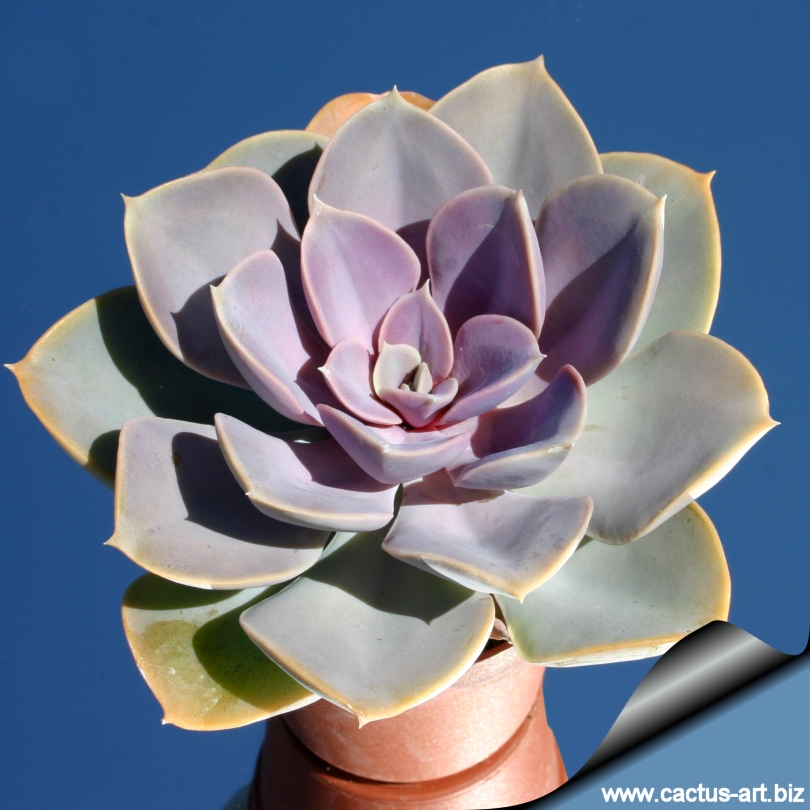
Echeveria 'Perle von
Nurnberg' is one of the most beautiful and striking of Echeverias with
thick succulent leaves in rosette formation a with beautiful glowing
mauve tinge.
|
|
Description: Echeveria "Perle von
Nurnberg"
is a hybrid of
Echeveria gibbiflora v. metallica
and Echeveria potosina.
It is a slower growing small cultivar with nice
waxy
pearly-purple/bluish coloured rosettes, that offsets to produce a clump,
spreading to around 30cm wide . The purple metallic blush is fairly
consistent throughout the seasons. Higher light and heat seem to
increase the purple a bit, though.
Rosettes:
Medium sized, gets about 15-20 cm in
diameter at the most, usually a bit less.
Leaves:
Broad in a tight rosette overlapping
each other, with concave upper surface, semicircular to somewhat
triangular with tiny pointed tips. They have a mauve ting with a silvery
sheen and change shades with the seasons.
Flowers: It produces gracefully arching flower spikes up to 40 cm
long. The flowers are a delicate coral colour. The outstanding feature
of this species is the quantity of flower stems that it produces, with
sometimes half a dozen or more being produced on one rosette.
Blooming season: Blooms appear during the spring months or in
late summer.
|
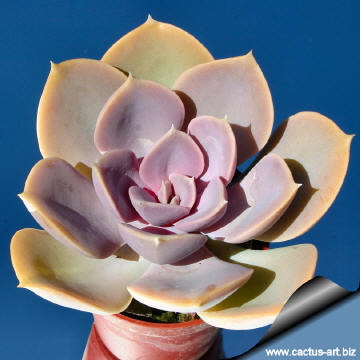 |
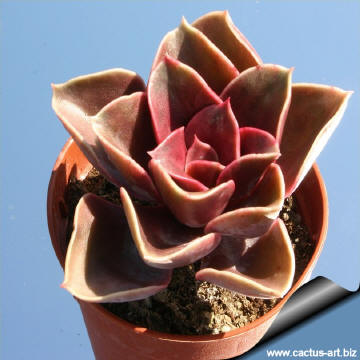 |
|
A lovely succulent of the most delicious kind it has mauve leaves with a
silvery sheen and change shades with the seasons.
Bright light is required to promote optimal growth.
|
|


Advertising
|
|
|
|
Family: Crassulaceae
Scientific Name:
Echeveria
cv. PERLE VON NURNBERG
Origin:
Garden origin (Nursery
produced cultivar)
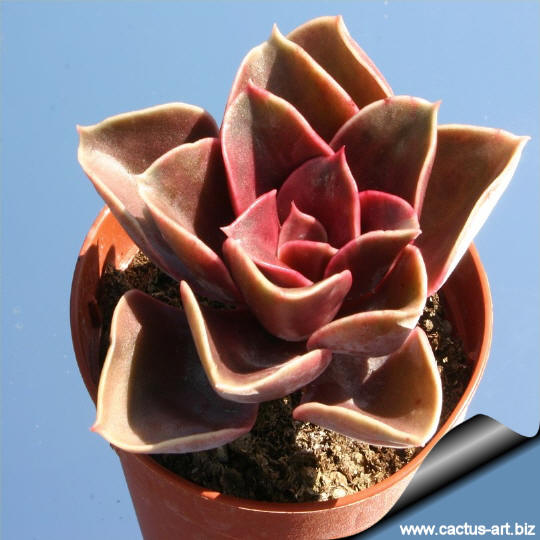
|
|
|
|
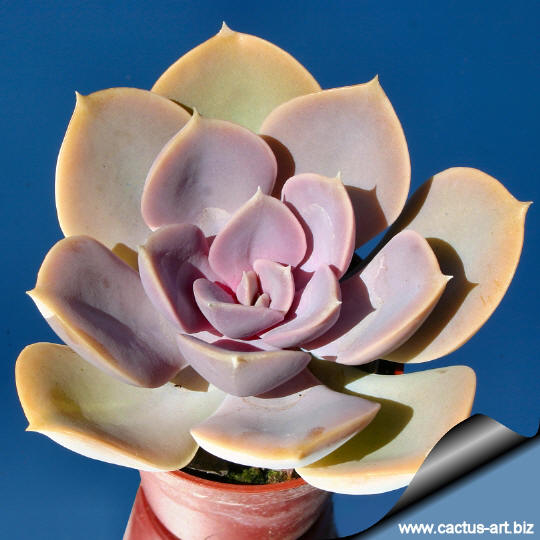
|
|
Cultivation: Very easy and reliable plant it can stay outdoors in
summer, in mild climate it can grows in the garden where it takes lots
of water without rotting. It is relatively slow growing and very slow to
sucker (if at all). It prefers a bit of afternoon shade but does also
well in bright light with high heat situations. It is however adaptable
to low light situations too. Plant in fertile free draining soil or a
cacti well-drained mix. Water well during the warmer months, preferably
from below, and sparingly in winter. Hardy hybrid tolerant of a wide
range of conditions including some frost. The flowers spike sometime
wilt because the rosette is almost drained of moisture, and may wither
badly. Early removal of the dying flower stems will prevent this being
aggravated by the production of seed, which of course will have the same
effect, since the flower stems stay turgid for some time to support the
seed production.
Uses: Beautiful succulent for container planting adding colour to
mixed collections. Excellent for windowsills or as colour accent in rock
garden or dish garden. Ideal for adding dramatic foliage contrast to
garden beds and borders and colour to the winter garden.
Propagation: Usually by suckers or basal leaves,
if If the plant is
repotted some of the bottom
leaves can be removed, in order to attempt
leaf propagation, it is also a common practice to collect the leaves
on the
flower stem. However many such
cuttings will dry out without producing a
plantlet, but with perseverance it is likely
to get a few new plants.
|
|